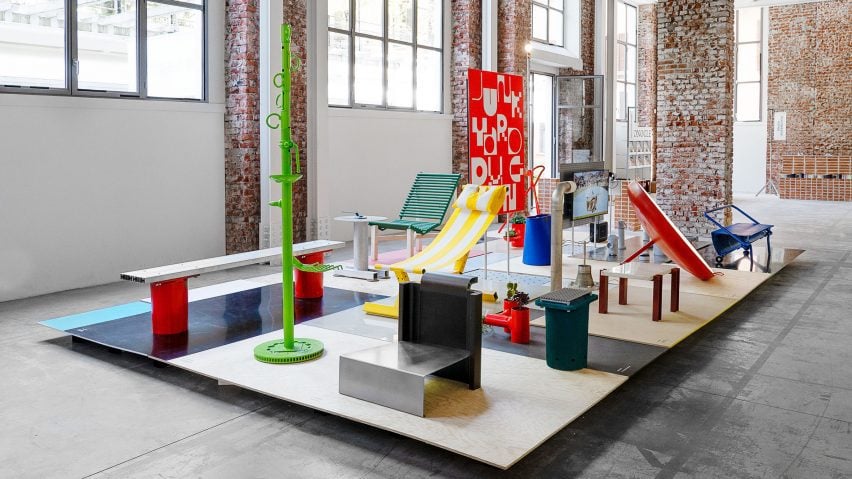Students from Swiss design school ÉCAL have worked with Philippe Malouin to make furniture from metal objects salvaged from the scrapheap in a project called Junkyard Diving.
ÉCAL's Bachelor Industrial Design students created the furniture and household items during a four-day workshop run by Malouin and based on his own salvaging practice, which saw the designer create 68 works from junk steel in a month for the Breeder Gallery in 2021.
The students exhibited the works in the Junkyard Diving exhibition, part of the sustainably themed Swiss group show Urgent Legacy at the House of Switzerland during Milan design week in April.
In a reversal of the usual design process, function would follow form. Ideally, they would use no additional external materials.
"It's all about picking," Malouin told Dezeen. "It's going to junkyards and not being scared. Working with steel, people think it's really daunting and scary."
"I just wanted them to be instinctive and not think too much in front of a computer and just let the function and the materials dictate what they were creating."
He also wanted the students to think in terms of creating a replicable industrial design.
"Instead of doing gallery pieces like I've done, which were all one-offs and constructed that way, I wanted them to try and do this exercise as an industrial design exercise and look at the waste streams and modify them in order to make a new product," said Malouin.
One of the most creative interventions in the exhibition is a deep blue barbecue, created by Christophe Ascençao from two aluminium train connectors with a grill attached to the top. Malouin says these types of train components are frequently discontinued, making them a good waste stream source for products.
There is also a lounge chair by Frederik Buchmann and Charlotte Dubois, made from an old towel radiator from a bathroom. The metal bars are painted green and draped across a wooden base to make a reclined seat.
"You would never understand it or see the radiator unless I told you it was there, which was also the point of the exercise," said Malouin.
Perhaps most unrecognisable as a piece of steel waste is a blue tote-style "bag" or basket by Charlotte Dubois. It is made from a ventilation duct, with black trimming applied at the edges and string strung between two holes to shape the object through tension.
The exhibition also included a virtual reality experience called Potential Objects: Junkyard Diving Reboot, which recreated the activities of the workshop. Developed by another ÉCAL student, Alex Nguyen, it allowed visitors to the show to walk through a junkyard and select objects to cut and weld together, just as the student designers had done.
ÉCAL is short for the Ecole cantonale d'art de Lausanne, although the school is better known by its acronym. Malouin said that he had found the experience of teaching there an "inspiring" one that also reminded him of the importance of accessibility in design education.
He said that while tuition fees in his UK home had risen to the extent that only the rich can afford to go to design school, ÉCAL had remained a "meritocracy", and that was visible in the calibre of the students' work.
Malouin's interest in metal junkyards has also just seen him launch a book, Steel Works, which documents the process he went through for his Breeder gallery show of the same name.
The London-based Canadian designer's previous work includes the Industrial Office set of experimental workplace furniture and a set of tables and benches with bases that reference whiskey barrels.
The photography is by Marvin Merkel.

